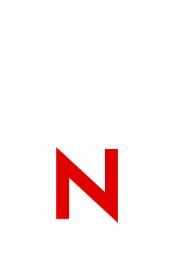|
1 Self-Extracting File Name: IDE286.EXE Revision: A
Files Included Size Date Time
\
IDE286.TXT (This File)
IDE.OBJ 5826 10-17-91 4:55p
IDE.DSK 963 10-22-91 4:03p
This README file of IDE286.EXE accompanies IDE.OBJ and IDE.DSK for NetWare v2.x.
INSTALLATION INSTRUCTIONS:
Format a DOS diskette and use the DOS label command to label it "DSK_DRV_030" (without the quote marks). Next, copy the entire contents of the .ZIP file to this diskette.
NOTES:
Several people have asked questions about the new IDE driver. Here are some of the questions and answers:
1. Q. What drives does the IDE driver support?
A. Most IDE/ATA drives.
2. Q. Does the IDE driver support the IBM Model 35 and Model 40 in a file server configuration?
A. Yes, if the system has the changes from IBM ECA# ECA087 implemented (at least new FRU P/N 92F0140.)
3. Q. Does this driver fix the problem that ISADISK had with "user definable" drive types?
A. Yes. The ISADISK driver used the INT41 and INT46 vectors to find the location of the drive or ROM parameter table. ISADISK would abend if the pointer to the table was below segment C800. BIOSes which support UD drive types typically put the table below C800:. For example, AMI and some other BIOS manufacturers use address 0300. The IDE driver queries the drives for drive information. It does not use the ROM-BIOS services.
4. Q. Given that the IDE driver obtains drive information from the drives, will Ztest create problems?
A. No. Since the drive parameters are located in sectors inaccessible to a write command, Ztest cannot write over them.
5. Q. How should the user set up his IDE/ATA drives if he is using the IDE driver?
A. A BIOS drive type is necessary in two cases: 1) a drive will have a DOS partition or 2) a drive will be used to cold boot NetWare. In the second case, the user may select any type that is the same capacity or nearly the same, but not more. In the first case, the best definition would be an exact definition. However, a definition which matches heads, sectors per track and has fewer than or equal to the actual cylinders would suffice.
6. Q. Does the IDE driver support multiple paddleboards?
A. Yes, two paddleboards. However, the paddleboards must be designed with jumpers to configure IRQ and Base I/O (primary I/O 1F0h and IRQ 14, secondary I/O 170h and IRQ 11, 12 or 15). The set-up would be analogous to any other dual controller AT configuration. The IDE driver must be selected and configured for both channels. It will find all drives when it initializes. The drive/s attached to the secondary paddleboard will not be defined by the machine's CMOS.
7. Q. Does the IDE driver address the problem of data verification on the extended AT bus (40 pin cable which connects the paddleboard or system board to the IDE/ATA drives)?
A. Yes. In the VERIFY ON mode, it will read and compare data to ensure integrity across the cables. The cost is performance. With verify ON, performance will be degraded significantly. Mirroring drives on a single paddleboard will not improve integrity because the cable in question is common to both drives. With drives mirrored (duplexed) on separate paddleboards, an intermediate level of data integrity would be achieved without the speed penalty of setting verify ON.
8. Q. Will all paddleboards work in my system?
A. No. It has been noted that some paddleboards will not work in some machines, and some drives will not work with some paddleboards. Refer to your hardware manufacturer or system integrator for recommended configurations.
The following limitations should be noted:
* This driver may be used with a DOS partition ONLY under the following condition: The definition of the drive by the system CMOS, whether user defined or predefined in BIOS, must match the "Identify" parameter's heads and sectors per track exactly. If the CMOS definition of the drive varies from the "Identify" parameters (heads or sectors per track) then the potential for conflicting partitions exists. If the above condition cannot be met, the alternative is to install only a NetWare partition and boot the server from floppy drive.
* The drive type number reported by the INSTALL program is generated by the IDE disk driver at initialization time and is useful only to the NetWare operating system.
* The IDE disk driver will not work with other ISA bus controllers (i.e. ST506/412 and ESDI). The IDE/ATA, ST506, and ESDI interfaces look similar to the system software, however, they are handled differently by the disk driver.
* The VERIFY ON option uses significant processor resources. It should not be used with other processor-intensive options, such as mirroring or Macintosh VAPs, due to possible adverse effects.
|

